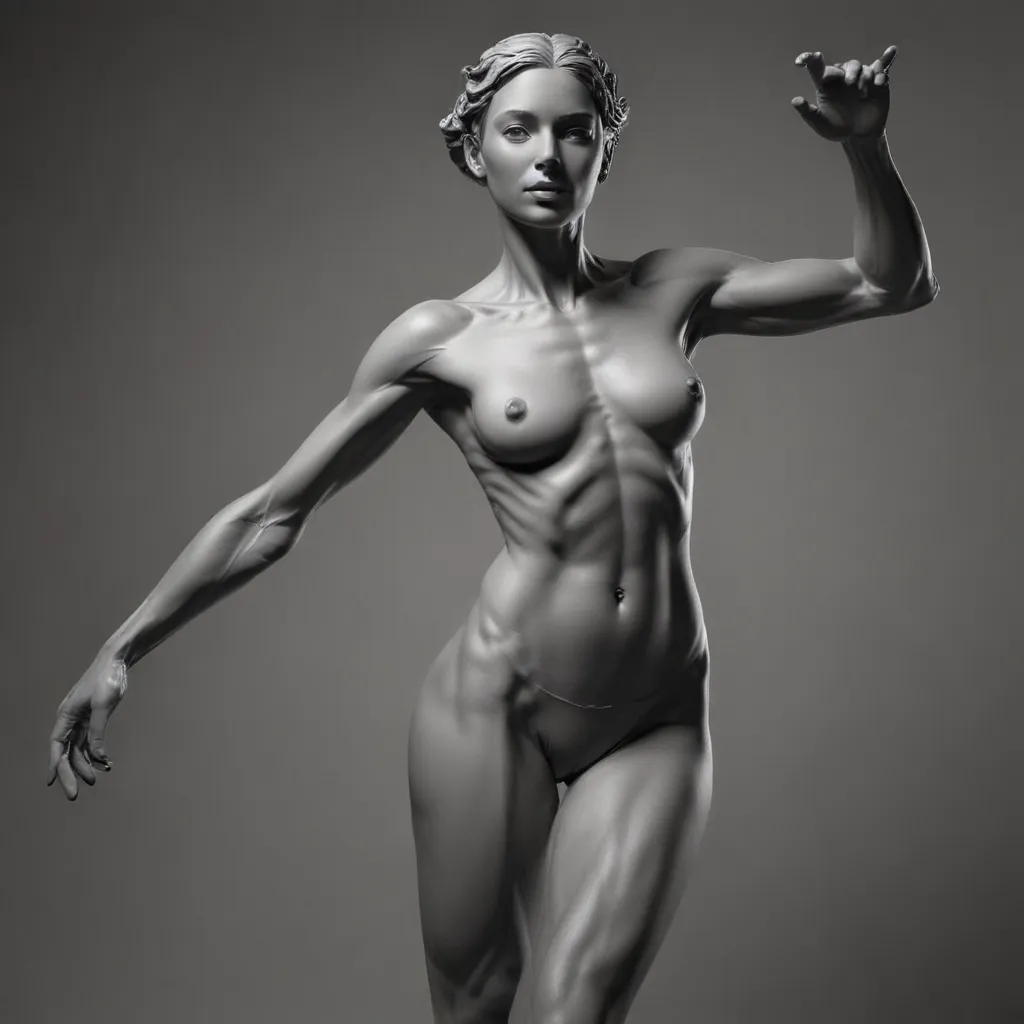
The human body in motion is a captivating and ever-evolving subject for artists. From the subtle nuances of a gesture to the explosive dynamism of the figure, capturing the essence of the form in dynamic states requires a keen understanding of anatomy, an intuitive grasp of movement, and a mastery of various artistic techniques. As an experienced art writer and creative consultant for Pencil and Paint Muse, I’m excited to delve into the world of dynamic drawing tutorials and sculpting with shadows to help emerging artists expand their skills in depicting the human form.
Drawing Fundamentals
At the core of any expressive figure drawing lies a solid understanding of pencil sketching techniques. Whether you’re working from life, photographs, or imagination, the ability to construct the form with gesture sketching, value studies, and precise rendering is paramount. Start by honing your skills in charcoal drawing, which offers a rich, expressive medium for capturing the essence of the figure. Experiment with the interplay of light and shadow, using the charcoal to sculpt the form and create a palpable sense of depth and volume.
Complement your charcoal work with the precision and control of ink drawing styles. Ink allows you to delineate sharp edges, define intricate details, and push the boundaries of abstraction. Explore how you can use ink washes, calligraphic lines, and strategic negative space to convey a sense of movement and energy within your figure drawings.
Painting Approaches
While pencil sketching and charcoal drawing provide a strong foundation, incorporating painting techniques can elevate your exploration of the human form in motion. Watercolor painting with its fluid, spontaneous nature is an excellent medium for capturing the ephemeral qualities of gesture and pose. Experiment with wet-on-wet techniques to create a sense of energy and fluidity, while dry brushwork can add gritty textures that evoke a sense of dynamism.
Delving into acrylic painting methods allows you to build up layers, blend seamlessly, and create bold, expressive marks. Explore the use of palette knives and brushstrokes to sculpt the form, and don’t be afraid to incorporate mixed media elements like pastels or collage to introduce unexpected textures and surfaces.
Creative Process
At the heart of any figure-focused artwork lies a deep understanding of the artistic design principles that govern form, space, and composition. Develop a keen eye for composition and framing, using strategic placement and intersecting lines to guide the viewer’s gaze through the dynamic movement of the figure. Carefully consider how light and shadow can be used to create a sense of volume, depth, and atmosphere, while color theory can be employed to enhance the emotional resonance of your work.
Cultivate a rich well of creative inspiration by observing the world around you. Engage in observational studies, sketching the figure in various poses and environments, and use visual references to deepen your understanding of anatomy and movement. Allow your personal experiences, emotional responses, and philosophical interests to inform the themes and narratives you explore in your figure-focused artwork.
The Human Form in Art
Mastering the depiction of the human form in motion requires a deep dive into the study of anatomy and proportions. Develop a comprehensive understanding of the skeletal and muscular structure, learning how to construct the figure from the inside out. Familiarize yourself with the nuances of figure drawing essentials, such as gesture, foreshortening, and the interplay of positive and negative space.
But capturing the dynamism of the figure goes beyond static poses. Delve into the realm of sculpting with shadows and dynamic drawing tutorials to breathe life into your figure studies. Observe the subtle shifts in weight, the tension and release of muscles, and the expressive qualities of the body in motion. Experiment with techniques that convey a sense of movement and gesture, allowing your figures to leap, twist, and flow across the page or canvas.
Tutorials and Demonstrations
To put your newfound knowledge and skills into practice, engage in a variety of skill-building exercises. Start with gesture sketching, capturing the essence of a pose in a few swift, expressive lines. Progress to value studies, exploring the interplay of light and shadow to create a sense of form and depth. Refine your techniques through rendering exercises, focusing on accurately depicting anatomical details, textures, and the nuances of the figure in motion.
Complement your exercises with step-by-step walkthroughs that guide you through the process of constructing dynamic figure drawings and paintings. Learn how to build the form from the ground up, starting with constructing the skeletal and muscular structure, then refining the details to capture the essence of the pose. Explore techniques for finishing touches, such as adding the final details, refining the edges, and enhancing the overall sense of movement and expression.
Through a combination of fundamental drawing and painting techniques, a deep exploration of the human form, and a focus on capturing the dynamic qualities of the figure, you’ll develop a versatile skill set that allows you to bring your artistic vision to life. Whether you’re working in pencil, charcoal, ink, watercolor, or acrylic, the principles and methods outlined in this article will empower you to sculpt with shadows and create figure-focused artworks that are truly captivating.
For more information on dynamic drawing tutorials, creative inspiration, and figure-centric art techniques, be sure to visit Pencil and Paint Muse – your go-to resource for all things art.
Tip: Practice daily sketching to continually refine your technique